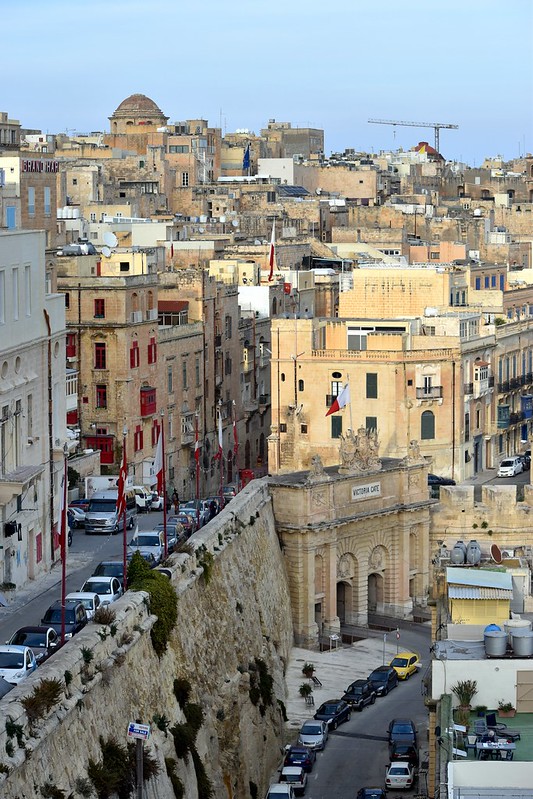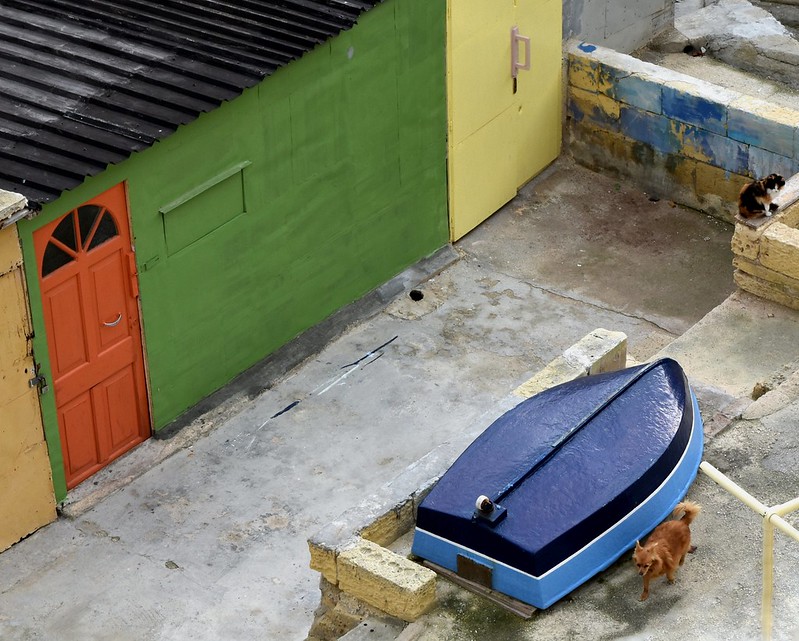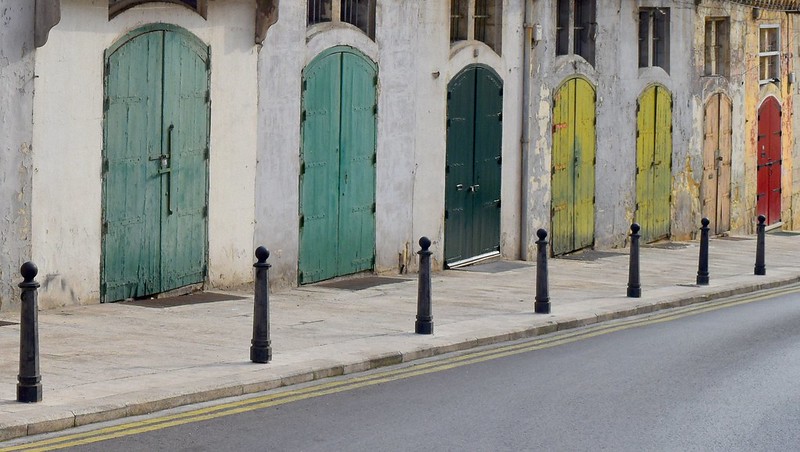At the end of January, when we were contemplating where to go for a long weekend away from Rome, a friend said “Malta–it’s #3 on the New York Times’ list of 52 places to go in 2016!” Malta was #3 on the list? It was, and for 39 euros each way, off we went to discover why.
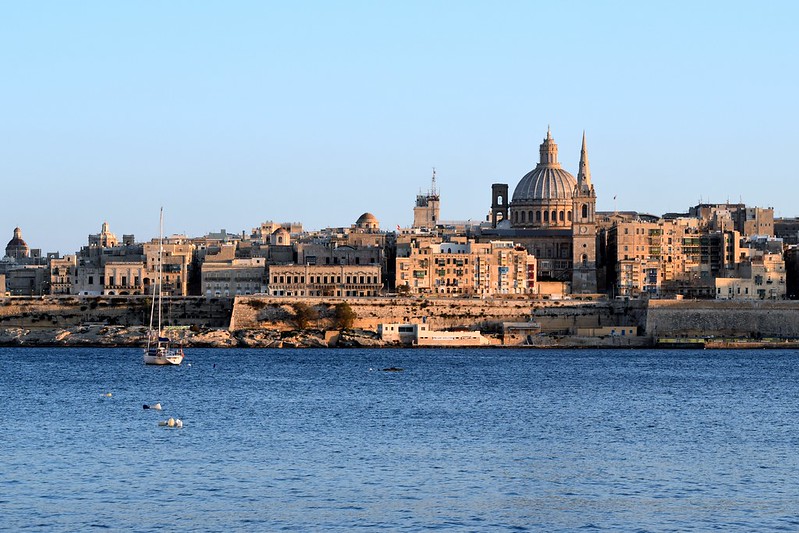
Malta–a country that blends Italian, Arabic, and British cultures– is made up of three islands south of Sicily, east of Tunisia, and north of Libya. With a short amount of time, we limited ourselves to the largest island (“Malta”), which is home to the capital city of Valletta and has sights aplenty. We focused on Valletta on Day 1, then went to Marsaxlokk, Mdina, and Sliema on Day 2. Our day in Valletta included the following:
St. John’s Co-Cathedral: The cathedral was built by the Knights of St. John (Knights of Malta) in the 1570s, after they had been on the island for 40+ years following their defeat in Rhodes by the Ottomans. King Charles V of Spain gave the Knights the Maltese Islands for the annual fee of one Maltese falcon. People frequently ask “Why is the church called a “Co-Cathedral? Traditionally, the church over which a bishop presides is called a cathedral, and in Malta that honor fell to St. Paul’s Cathedral in the old medieval capital of Mdina. But in the 1820s, the bishop was allowed to use St John’s as an alternative see, and hence it too became a cathedral, after 250 years of being a simple church. Except that it hadn’t been a simple church for a long time and by then, the Knights were no longer in Malta. However, they did everything in their power to make their church memorable, even if it wasn’t a cathedral. There is barely an ungilded surface to be seen–except on the floor, which features a dizzying selection of marble tombstone decor teeming with mosaic skeletons. Though a somewhat morbid lot, those Knights were extremely fond of bling.
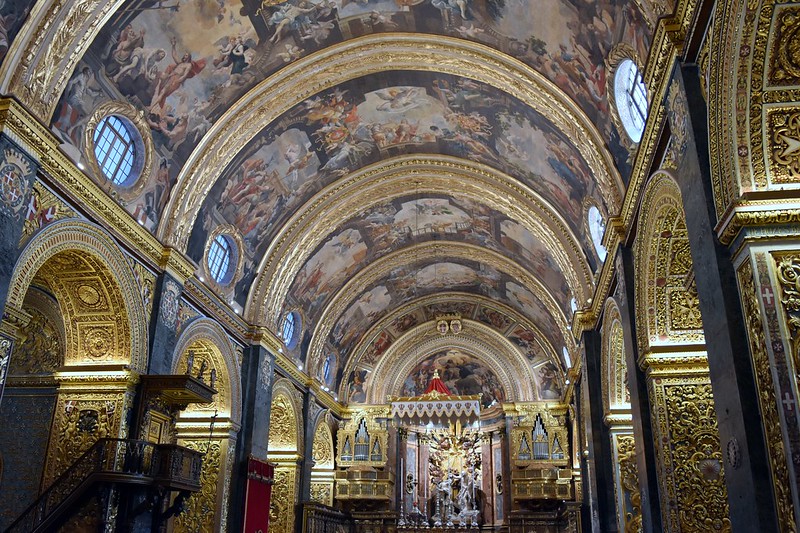

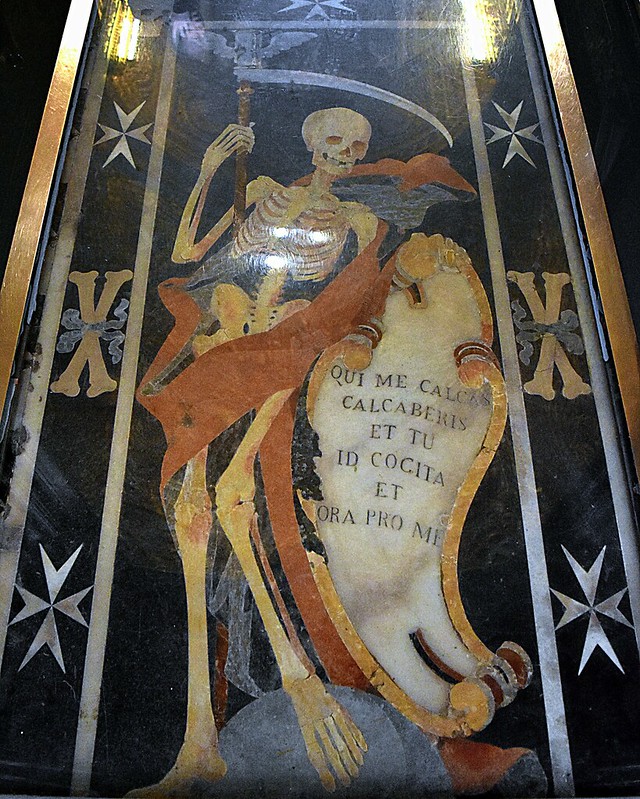
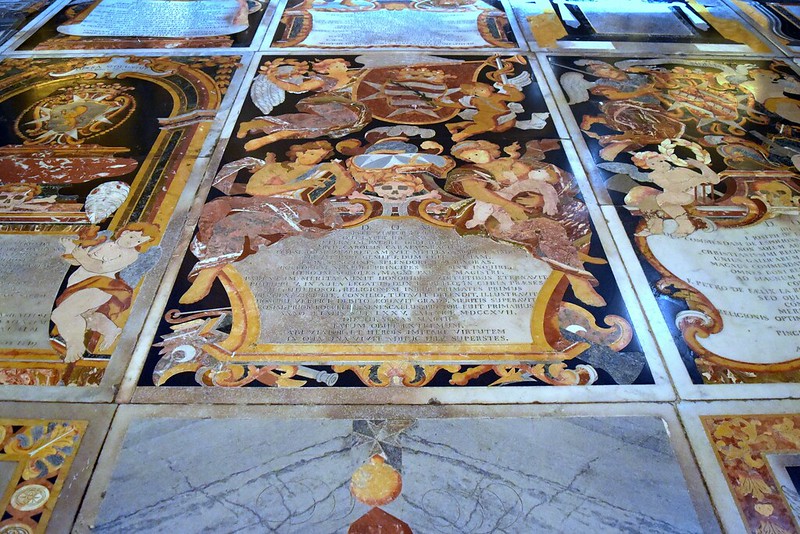
Aside from the lavish decor, another reason to visit the Cathedral is Caravaggio. After killing a man in Rome in 1606, he spent the last four years of his life on the run. He went to Malta in 1607 in the hopes of getting a Maltese knighthood with which to redeem himself. He paid for the knighthood with paintings, two of which are in the cathedral: The Beheading of St. John the Baptist, the only painting Caravaggio signed, and St. Jerome Writing. Caravaggio’s painting of the head knight himself, Grand Master Alof de Wignacourt, is in the Louvre. Alas, things did not go well for Caravaggio in Malta. After wounding another knight the day before the grand unveiling of The Beheading of St John in 1608, he was thrown into a hole carved in the rock to await further (worse) punishment. He languished there for about a month and then somehow got out (a hitherto unmanageable feat), off the island, and back to Italy without being caught. He obviously had help. But his luck ultimately ran out; his knighthood was not only revoked, but he was attacked by several assailants and slashed across the face in Naples in 1609; some biographers believe the knight he wounded in Malta was behind the attack. Caravaggio died in 1610 at the age of 38, on his way back to Rome after being pardoned by the Pope.
Feast of St. Paul’s Shipwreck: Unbeknownst to us, we arrived in Malta on the day of the Feast of St. Paul’s Shipwreck. According to tradition, Paul the Apostle was on his way to be tried in Rome when his ship capsized off the coast of Malta. He survived and remained on the island for a while and won the affection of the populace, which lasts to this day; references to St. Paul are visible everywhere. The Feast in his name involves marching bands, confetti tossing, processing (with an extremely heavy 350-year-old statue of St. Paul), and celebrations at the Church of St. Paul’s Shipwreck — and we were delighted to experience it throughout the day and into the night. The Feast is usually held on February 10, but even if you are not in Valletta on the day, the church is worth seeing. If you leave the Co-Cathedral with memories of gold, the Church of St. Paul’s Shipwreck will have you seeing red.
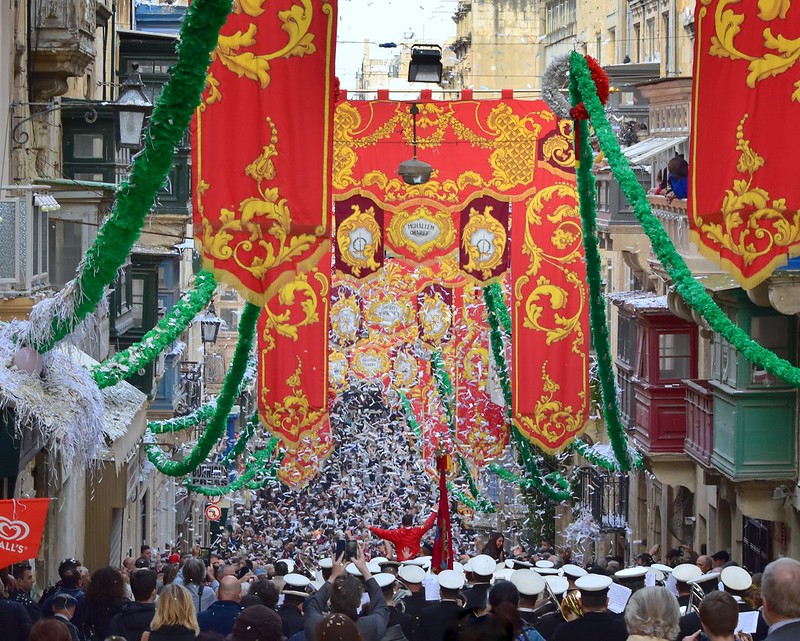
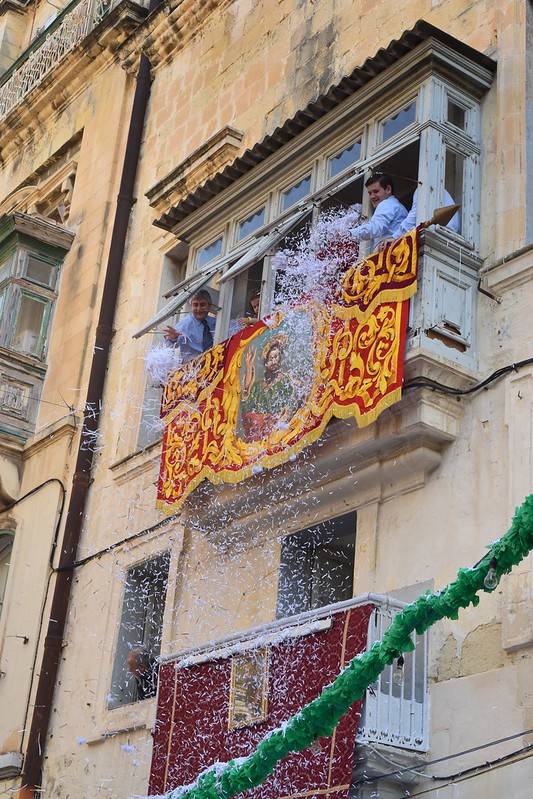

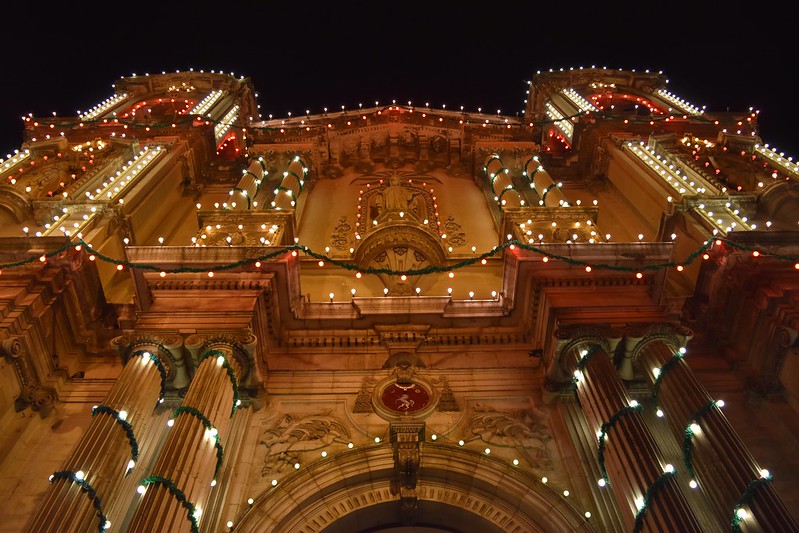
Saluting Battery: In between all the Feast-day celebrations, we made sure to get to the Upper Barrakka Gardens–not just for the stunning views of the Grand Harbour, but also for the Saluting Battery (the firing of a cannon), which occurs at 12 noon and 4 pm every day. Fans of Patrick O’Brian’s Aubrey-Maturin novels set during the Napoleonic Wars will have read about the custom of gun salutes for ships entering a harbor, and also about Malta. O’Brian’s eighth novel, Treason’s Harbour, is based there. In the novels and in Malta, Napoleon is not remembered fondly; the Knights of St. John surrendered the island to him in 1798 and were forced into exile (again, this time to Rome). Napoleon then dismantled the Roman Catholic Church on the island and stripped the churches of their valuables.
There are actually eight cannons on the Upper Barrakka battery, but the last time all were fired–in a rolling 21-gun salute–was when Queen Elizabeth visited Malta in November 2015. She and the Duke of Edinburgh lived in Malta for two years as newlyweds when he commanded a Royal Navy frigate there; Malta is the only place outside the United Kingdom the Queen has ever lived. In 2015, she arrived by ship, as her father had done in 1943 to offer words of comfort and condolence to the population. Because of its strategic location and the presence of a British base there, Malta was horrifically bombed by Axis pilots during World War II, with one stretch lasting a continuous 154 days. As a result, the Maltese population as a whole was awarded Britain’s highest civilian honor for bravery.
Other City Sights: One of the nicest things to do in Valletta is to just walk–up to the center of town and down to the water’s edge. It is a beautiful blend of old…
… and new. In terms of the new, there is the controversial but striking new City Gate, finished in 2014 and designed by Renzo Piano, who also designed the new Parliament building and the new open-air theater housed within the ruins of the bombed-out Royal opera house. If you are catching a bus to any other part of Malta, you will walk right by all three structures, as the main bus area is outside the City Gate.



Finally–armies march on their stomachs, so if you are doing a lot of walking, you’ll need some fuel. Stop by Nenu the Artisan Baker for Maltese-style pizza known as ftira. The version I tried included potatoes, pork belly, ricotta, broad beans, and rosemary. It was fantastic, but huge!

And that was Day 1 in Valletta. We would also have liked to see the Casa Rocca Piccola, but we arrived just after it had closed for lunch. In Valletta, it is important to plan the timing of your visits; the Cathedral, for example, is closed Saturday afternoon and all day Sunday.



